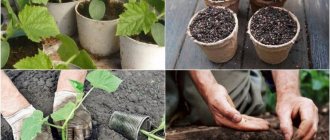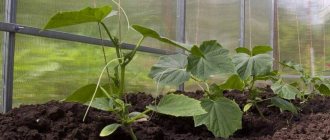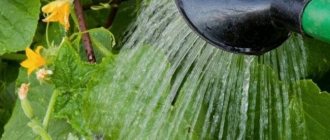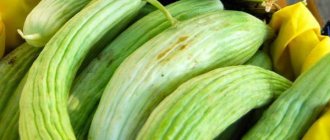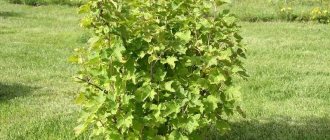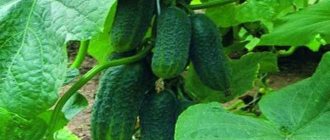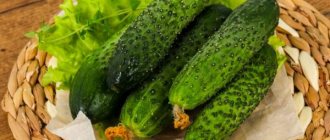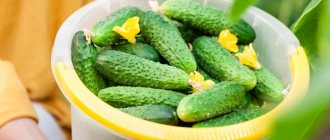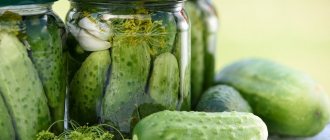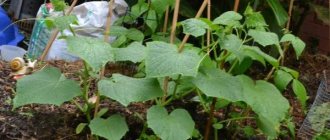Balcony cucumber F1
Growing vegetables at home is not an easy task, but with the right approach and compliance with agrotechnical standards, it is quite feasible. With the advent of the latest breeding developments, many vegetable crops can be adapted for cultivation in an apartment or in a private house. For example, balcony cucumber f1 can be grown on a window, while still producing an excellent harvest of tasty and healthy fruits. How to grow this cucumber hybrid, without the use of greenhouses and greenhouses, even in severe frost, will be discussed in detail in this article.
Balcony cucumber F1
Cucumber “Balcony F1”: description with photo
The hybrid was bred by breeding more than 10 years ago. The plant is a bush of medium branching with shortened internodes. A distinctive feature of the “Balcony” cucumber is its unpretentiousness to growing conditions and high yield. The fruits are small, cylindrical, 6–8 cm long. Up to 8 ovaries are formed in the axil. The plant has a predominantly female flowering type. The fruits are dark green. Cucumbers have a slightly sweet taste, so they are ideal for both fresh consumption and canning.
Fruits of balcony cucumber F 1
Are cucumber, balcony and window opening compatible?
For a long time, enterprising owners have been using a balcony and a window for a small vegetable garden. Dill, parsley and other greens come to the table directly from the improvised garden bed. And preparing a salad from freshly picked cucumbers is not a problem at all; you just need to put in a little effort and follow the recommendations of experts. The key to success is the choice of seed material. You should not choose a super productive variety. It is better to give preference to those types that meet the following requirements:
- belonging to the pumpkin family;
- thermophilia;
- annual plant;
- moisture resistance (likes abundant watering and high air humidity).
Soaking seeds in potassium permanganate
Productivity and fruiting
The hybrid has a yield per bush of about 2 kg. If during the growth process the temperature and humidity optimal for cucumber growth are maintained, then this figure can be increased by one and a half times. An important factor in increasing productivity is the composition of the soil. The soil for growing cucumbers at home must be sufficiently nutritious, so you cannot do without the use of organic and mineral fertilizers. Fruiting of cucumbers is amicable, the greens are formed in bunches, several pieces, in internodes.
Friendly fruiting of balcony cucumber F 1
The right time to plant
Sowing work can begin as early as February. It is also appropriate to engage in agricultural technology for balcony cucumbers in March and April. The timing is determined based on the temperature on the loggia or balcony. When the thermometer stops dropping below 12-14°C at night, the time has come. To obtain earlier fruits, owners use the seedling method. At the end of January - beginning of February, seeds are sown in paper cups and stored in the apartment. A well-lit room with an air temperature of no more than 18-20°C is suitable for this. When using utility rooms where there are no large window openings, it is recommended to install a special lamp above the drawers.
Ripening time
Fruiting occurs 40 days after emergence, but only if all the conditions necessary for plant growth are met. The presence of drafts can have a particularly negative effect on the rate of development of cucumbers. A decrease in temperature below + 14 degrees, even at night, will also lead to a significant slowdown in the formation of vegetative mass. The “Balcony F1” cucumber, which is grown on a window at home, must be supplemented with special phytolamps to obtain a timely harvest.
Phytolamps on the balcony - additional illumination of seedlings
Video tips for growing cucumbers on the balcony
How to achieve a good harvest of cucumbers on the balcony - video from A to Z:
Recommendations based on personal experience:
Successful experience of growing cucumbers on a balcony with windows facing north:
Analysis of varieties and tips for choosing:
As you have already seen, growing cucumbers on a window or balcony is a great opportunity to get a good harvest of fresh and tasty vegetables. Using the recommendations of vegetable growers, you can also achieve remarkable results and after just one and a half to two months you can already crunch on fresh cucumbers grown by yourself.
YOU MAY ALSO BE INTERESTED
Advantages and disadvantages
Like any artificially bred plant variety, the Balcony F1 hybrid has both advantages and disadvantages. The main advantages over similar hybrids, such as the “Dynamite F1” or “Balcony Miracle” cucumber are:
1. Resistance to cladosporiosis, common mosaic and downy mildew.
2. High yield (up to 10 kg/m2)
3. Friendly ripening of fruits.
4. Early ripening variety (no more than 42 days pass from germination to the first harvest)
Disadvantages of a hybrid:
1. Does not tolerate exposure to direct sunlight.
2. Demanding on a balanced composition of the soil mixture.
It develops poorly at low air temperatures and the presence of drafts. Despite the disadvantages, the hybrid for growing indoors is in great demand due to the ability to provide oneself with vegetables even in the absence of one’s own summer cottage.
General characteristics of the variety
The bush is medium-climbing, the maximum length of the stems is 2 m. The type of fruiting is bunched. In each internode, 3-8 female flowers with an ovary are formed. The hybrid does not need pollination by bees, so male flowers (barren flowers) are practically not formed.
The yield of 1 vine with good care is 0.5-0.7 kg of fresh herbs daily. It is advisable to collect every day, since if the fruits are picked infrequently, it becomes difficult to fill new ovaries. To achieve good fruiting, each plant requires a volume of soil of at least 8 liters, so it is convenient to grow window and balcony cucumbers in plastic buckets with a capacity of 10 liters.
The foliage of the lashes is average, the leaf blades can reach 12-15 cm in size, slightly wrinkled. The stems are powerful and strong, and bear the load of filling ovaries well.
Balcony cucumber is not susceptible to fungal diseases, is resistant to powdery mildew and mosaic viruses, and is weakly affected by root rot. Despite its intended use in closed ground conditions, the cucumber hybrid bears fruit well in a film greenhouse or on open beds. The variety is resistant to temperature fluctuations and tolerates minor cold snaps (up to +10°C), and is stress-resistant.
Soil and seed treatment
To prevent plants from being affected by diseases, they must be treated with potassium permanganate. Seed dressing using this method is carried out in the following sequence:
1. Prepare a 1% solution of potassium permanganate in clean water at room temperature.
2. Soak the seeds in the solution for 15 - 20 minutes.
3. Rinse the seeds with running water and then dry at a temperature of 30 degrees.
Each plant will require at least 10 kg of soil mixture. Soil purchased in a store or prepared independently must be enriched with mineral fertilizers in the following quantities:
1. Nitroammofoska – 15 g.
2. Urea – 10 g.
After thorough mixing, the mixture is placed in a container for growing cucumbers.
Pest Prevention
Even when growing cucumbers indoors, you need to be prepared for pests to attack them. Perhaps the main one is the spider mite. To prevent its occurrence, it is necessary to carry out preventive treatment with garlic tincture. To do this, take 1 head of garlic per 1 liter of water, chop it and leave for 45 minutes. After this, filter, add a little soap and spray the indoor plants daily.
A decoction of tobacco helps control aphids on indoor cucumbers. You can get it from a pack of cigarettes, then add a liter of water and boil for 10 minutes. Then add another 0.5 liters of water. To make the aphids disappear, you only need to treat the plants with the resulting mixture once. If you prepare a stronger decoction (from 1.5 packs of cigarettes), you can also deal with whiteflies.
As you can see, growing cucumbers indoors is no more difficult than indoor flowers. Despite the presence of a large garden, indoor vegetable growing makes it possible to eat fresh fruits, if not all year round, then at least at a time when they are still very expensive on the market and there is a risk of buying a product with a high content of substances harmful to the body. The activity is very exciting, not particularly troublesome, and useful.
Sowing
You can plant seeds directly into a container for growing plants, but in this case you will have to wait too long for the first shoots. To speed up the process of growing cucumbers, you should plant the seeds in small disposable cups, which are then placed in a warm place for several days. After emergence of seedlings, the temperature should be reduced and additional lighting with a phytolamp should be turned on. When 3–4 leaves appear, the cucumbers must be transplanted into large containers.
Cucumber seedlings F 1 in plastic cups
Planting seeds
The cucumber variety “Balcony F1” begins to be planted in window “beds” quite early. Some vegetable growers do this at the end of December, others at the beginning of February. Both options are acceptable. The only requirement is the need to establish for the culture the temperature at which it is comfortable. When planting in December, you can get the first fruits as early as April. The period between sowing and planting seedlings in a permanent place is approximately a month. Based on this, the planting date for balcony cucumbers is calculated.
Gardeners believe that the entire future harvest depends on the quality of the initial work. For effective results, carry out the following actions:
- treat cucumber seeds in potassium permanganate;
- germinated on a damp cloth.
When the seeds hatch (their noses crack), planting begins.
Care
Growing the “Balcony Miracle F1” variety on a window is possible throughout the entire calendar year, but only if agrotechnical standards are observed. The plant requires proper care, which is easy to organize at home.
Temperature
If balcony miracle cucumbers are grown at the wrong temperature, the period of plant formation will be significantly delayed. The optimal temperature for growing cucumbers is 20 - 22 degrees, but at night this figure can be safely reduced to 18 degrees, without any serious consequences.
Watering
Cucumbers tolerate high soil and air humidity well. With a lack of moisture, the yield is significantly reduced, therefore, one of the most important operations is timely watering. Water for plants should be at room temperature. Watering is carried out at least once a day, and water should not stagnate in the container.
Top dressing
Cucumber F1 “Balcony”, the planting and care of which requires the mandatory application of mineral fertilizers, should be fed with nutrients throughout the entire period of plant growth. The most convenient form of fertilizing is adding chemicals to the water for irrigation. The solution is made at the rate of 3 grams of urea per 1 liter of clean water. It is necessary to water the plant with a fertilizer solution at the root.
Agricultural technology
The stages of growing cucumbers on a balcony or window are similar to the principles of cultivation in a garden plot. To obtain a harvest, you cannot neglect any of the rules of planting and caring for the crop. Violation of agricultural technology can lead to a decrease in yield or even death of the plant.
Sowing seeds
Homemade vegetables can be grown either through seedlings or by direct sowing of seeds in permanent containers. The second method allows you to avoid picking. Plants will not waste energy on adaptation and will produce a harvest earlier than those that have been harvested. To speed up germination, seeds can be germinated. The easiest and most effective way is to wrap them in a damp cloth and place the bundle in a container with a lid (to maintain humidity). In a warm place, sprouts will hatch in 1-2 days and can be planted in pots.
The choice of soil must be taken responsibly. Cucurbitaceae will not bear fruit in depleted and poor soil. It is best to buy a specialized soil mixture for vegetables. For high-quality growth of cucumber crops, the soil must meet the following requirements:
- fertile;
- loose in structure;
- neutral in acidity.
For information!
The optimal time for planting cucumbers at home is from the second ten days of April until May.
Basics of care
May be interesting: Selecting the best varieties of cucumbers for planting in a polycarbonate greenhouse What to do if cucumber seedlings are frozen: how and what to protect “Red Bull” pepper: juicy and sweet
After the first sprouts appear, the containers should be moved to the brightest and warmest place without drafts. A glazed balcony on the south side of the house is ideal, but for mature plants. For the first two to three weeks, it is necessary to supplement the seedlings with light, 2-3 hours in the morning and evening. The air temperature for development, growth and fruiting without problems is more than 18 °C during the day and more than 15 °C at night. Before the fruiting period, watering should be infrequent as the soil dries out. While the sprouts are still very small, it is better to water them with a spoon or using a syringe. When filling the fruits, you don’t have to worry about over-moistening the soil. The main thing is to provide drainage holes and trays in the pots to collect water. Over time, the roots will grow through the bottom of the containers and will absorb excess moisture from the trays. For irrigation, you can use only settled and warm water.
“Home” cucumbers need more frequent feeding than street ones. Due to the small volume of soil substrate, plants quickly absorb all useful substances. Recommended scheme:
- before entering the flowering period - nitrogen-based fertilizers 1-2 times with an interval of 10 days;
- during flowering and formation of ovaries - potassium fertilizing;
- during the fruiting period - compositions with a high content of phosphorus and potassium 1-2 times with an interval of 14 days.
Balcony variety bushes are small in size and are not prone to strong branching. Therefore, there is no need to engage in plant formation. You just need to control the number of whiskers on the lashes. Agricultural technicians recommend removing all the tendrils and tying the plant up manually. If desired, you can pinch the growth point on the main or side lashes. This will not cause harm to the plant, and already established greens will ripen a little faster.
Diseases
Hybrid varieties of cucumbers are resistant to many diseases, but with excessive watering, the root system may rot. If the temperature drops too much, viral and bacterial infections may occur. Considering the fact that it is impossible to use chemicals in a residential area, it is necessary to focus on prevention. By maintaining optimal levels of humidity and temperature, you can get a healthy plant, and timely feeding will allow the plant’s immune system to prevent the development of diseases.
Treating tomatoes with Bordeaux mixture
When growing tomatoes on the balcony, you should take into account that most often such plants are susceptible to more diseases than their relatives growing in open ground in the fresh air. To make vegetables more resistant to negative factors, it is recommended to ventilate the balcony at least 3 times a week.
If the weather permits, windows can be opened all day, and closed only in the evening and when the temperature drops.
Among other things, it is necessary to spray the seedlings with Bordeaux mixture.
It is advisable to do this 2 to 3 times during the entire summer period. It is not necessary to buy a similar mixture in the store; it is easy to prepare it yourself.
You will need the following components:
- copper sulfate – 10 g;
- fluff lime – 20 g;
- warm water – 100 ml.
All components are mixed, and then the resulting mixture is treated with plants.
Reviews from gardeners about homemade cucumbers
Lyudmila, St. Petersburg Last season I tried to grow cucumbers in the window and chose the Balkonny variety. The plant is compact, unpretentious, and a pleasure to care for. I harvested 14 kg from 5 bushes.
Antonina, Orel I have been growing cucumbers on the window for 3 seasons. This year I planted the Balkonny variety for the first time. I immediately noticed good seed germination and yield. The fruit collection is still ongoing, but the total weight has already exceeded 10 kg.
Ivan Valentinovich, Moscow I really liked the balcony variety for home growing. All summer we eat salads exclusively from vegetables collected directly on the loggia. The largest harvest record was set last year - 22 kg were collected from 7 bushes.
Rimma, Saratov region. My window is located on the south side, so because of the abundance of sunshine I came up with a shading made of thin tulle on the glass. I also installed a humidifier near the windowsill. This helped to survive the hot season without losing the harvest.
Vladimir, Ufa I begin to sow cucumber seedlings for growing fruits on the balcony in January. At the end of February I transfer the roots to separate pots. Already in mid-April I began to pick the first cucumbers. The Balcony variety is ideal for cultivation at home. Taking into account the advice of experienced gardeners and adhering to the principles of technology, a balcony or window can be beautifully landscaped and a good harvest of fruits can be harvested. At the same time, you will be able to enjoy the taste of summer until the first frost.
Caring for cucumbers on the window
Recommendations for caring for a small window garden are not much different from the usual ones:
- On hot days, cucumbers protect from direct sunlight, creating shade and coolness. Blinds and fans will help with this.
- To ensure the required level of humidity, water is placed next to the containers. Cucumber is a moisture-loving plant. But in order not to spoil the windowsill, containers with a double bottom are prepared for plants.
- The floor is covered with linoleum or tiles. In summer, the balcony is covered with film to make caring for cucumbers easier and removing excess moisture. The roots penetrate through the drainage into the lower pan, where they actively absorb moisture.
The balcony variety of cucumbers does not require pinching. Hybrids are designed for short growth. But if there is strong stretching, you can pinch the stems above the 10-12th leaf.
As temperatures drop, containers are insulated at night - wrapped in dense material made from burlap or spunbond. The roots should not feel sudden changes. After fruiting is completed, both the upper part of the plant and the roots are removed. The land can be left over the winter so that vegetables can be grown again in the future. It is recommended to store soil not in boxes, but in plastic bags. Containers and containers are washed, disinfected and dried. In this form they are ready for the next season.
Growing conditions
To create a “vegetable garden” in a city apartment, breeders have developed special balcony hybrids. Cucumber “Balcony F1” is one of them (another name is “Balcony Miracle”). It is easy to grow and does not require special knowledge. But there are a number of rules for the loggia:
- Excellent conditions are created for cucumbers when located to the east or southeast.
- If the growing site is directed to the north, you will have to create additional lighting devices to increase daylight hours and heat.
- Glazed buildings are better suited, since cucumbers do not like cold and wind. Without glass, vegetables will die or will bear fruit for only a short time.
The balcony grade has the following characteristics:
- shade tolerance;
- fruit compactness;
- short vines;
- low stems;
- does not require pollination.
In stores you can now buy special containers in which it is convenient to grow “Balcony F1” cucumber. It is recommended to purchase containers for vegetables in white or light colors. They will not heat up in the sun and will protect plant roots and the necessary moisture from overheating.
A drainage system is created in growing containers; small expanded clay is used for it, which will allow the roots to breathe. Liquid fertilizers are the same as for indoor plants. The sprayer will be a bottle with a special applicator. To support the stem, a regular clothesline or twine will do.
Growing cucumbers of the “Balcony F1” variety is no different from agricultural technology in a greenhouse or in an open garden bed.
Methods for tying lashes
When the vine has 5 leaves, it will require installation of supports. A rope is pulled on the window where the cucumbers are located. Height from the floor is about 2.5 meters. It will be possible to gradually throw a vine over it. To begin with, the whip is tied to a transverse cord.
In stores you can buy special plastic supports for tall indoor plants. They are also suitable for “Balcony F1” cucumbers. You should not leave a stem with 6-8 leaves untied - the branches will twist. There will be no room for the ovary and free access of air, fruiting will become rare.
Try to wrap the rope loosely around the antennae. It is better to make loops from ropes, without tying the stems. The branches are periodically bandaged, tightening or lowering. It all depends on the severity of the lashes, the number of fruits and their location on the shoots.
Soil preparation
The seeds of balcony cucumbers are sown in April, when the days begin to gradually lengthen. Planting earlier is not recommended: budding of vegetables in the room will result in the loss of most flowers. It will be too early to take the seedlings out onto the balcony, but indoors they will begin to drag and not bear fruit. You should calculate in advance the period from which fruiting will begin, so that at this time you can move the plants to the balcony.
Cucumbers love fertile soil rich in microelements. The most popular option is purchased land. For cucumbers, a special soil composition is purchased: peat and perlite. Universal soil is packaged in bags of 5 kg or more. The acidity of the composition is in the range of 6.3-6.8 pH. It should be checked according to the information on the packaging. Buy more soil as you will have to add soil to your vegetable container throughout the summer. But it is better to use a mixture of several components: garden soil, compost, purchased soil.
For full growth of cucumbers, approximately 5 kg of soil per plant is required. Having placed this amount of soil in the container, you can calculate how many seeds and seedlings will be needed. A balcony or window will not allow you to place a large number of plants.
Compaction of seedlings will lead to the development of diseases, so experts advise limiting the number of cucumbers in the container.
Before placing the seedlings, the soil is disinfected. Disinfection methods:
- spilling fungicide;
- steaming over boiling water;
- heating in the microwave;
- calcination on the stove.
The drainage is poured to the bottom, the height of the drainage layer is 2-3 cm.
The final stage will be placing the soil in a container prepared for cucumbers: boxes, containers, pots. There is no need to fill them to the top, leave about 5 cm from the top edge. The soil is watered and left to settle.


